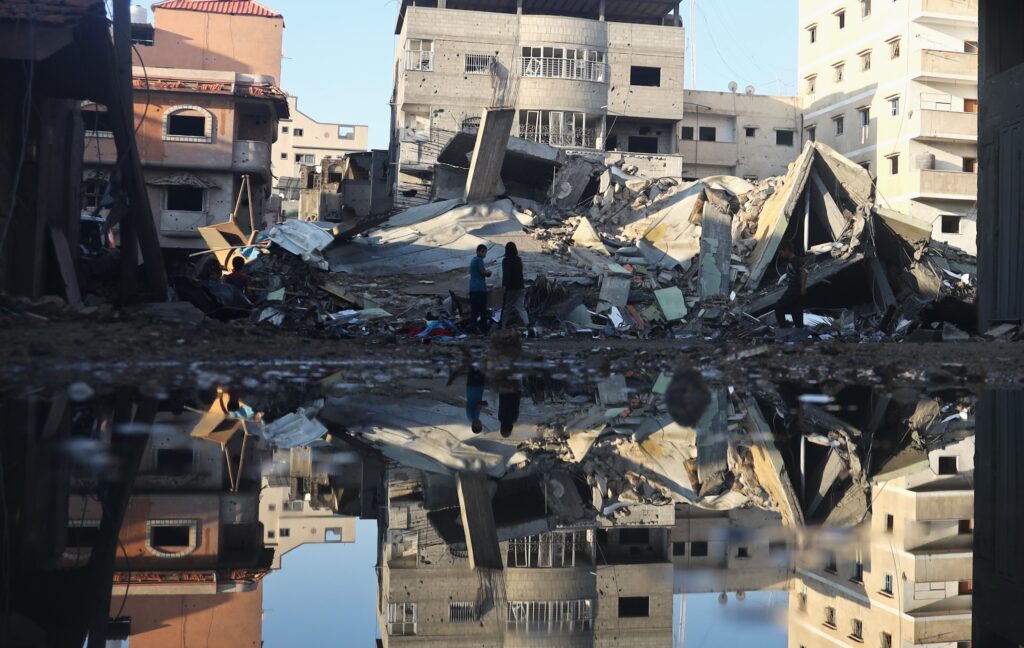Food & Climate
Acute malnutrition in Gaza is at serious levels – ten times higher than before the escalation of hostilities and the conflict hits some of Lebanon’s most productive agricultural areas, Food and Agriculture Organization (FAO) Director General QU Dongyu said.
The situation in the Middle East is catastrophic, Dongyu said yesterday in his address to the G7 Development Ministers’ Meeting taking place in Pescara from 22-24 October.
“If we want to save lives and prevent famine, we urgently need a humanitarian ceasefire and unlimited, safe access to people who are in need and in danger,” he stressed, according to a statement that “Food & Climate” platform received.
In his remarks at the Session on the Humanitarian Crisis in the Middle East, Qu cited the latest Integrated Food Security Phase Classification (IPC) assessment showing that 1.84 million people across the Gaza Strip are experiencing extremely critical levels of acute food insecurity.
Hunger and malnutrition
Additionally, projections indicate that around 16% of the entire population of Gaza could be in IPC 5 (“Catastrophe” phase), between November 2024 and April 2025. People in this phase are experiencing an extreme lack of food and face starvation resulting in destitution, extremely critical levels of acute malnutrition and death.
A functioning local agrifood system is crucial to reduce the concerning levels of hunger and malnutrition, Qu underscored. “When people cannot produce food and cannot consistently access food, they will suffer increasingly extreme levels of acute malnutrition, and the risk of death is high,” he added.

The Director-General outlined FAO’s top priorities in Gaza including reactivating local food production; restoring the availability of highly nutritious food, especially in view of the upcoming winter season; preventing the agricultural sector’s total collapse; preserving remaining agricultural livelihoods; and curbing acute hunger and malnutrition, especially among children.
According to the FAO-UNOSAT most recent geospatial analysis in Gaza, nearly 70% of croplands have been destroyed; over 70% of olive trees and orchards have been burned to the ground; agricultural infrastructure has been decimated, including damage to over half of the wells and over 44% of greenhouses; and 95% of cattle have died.
FAO’s director-general warned about the implications of the escalated armed conflict on the food security across the entire region with long-term consequences.
He pointed out that agrifood systems across the West Bank were also under threat. The last round of farmer surveys there indicate that about 63% of crop producers and 72% of livestock producers reported being unable to access their fields or pasture.
2025 winter crops in Lebanon
“As the conflict spills over borders, so does its impact,” the Director-General said. “FAO is already observing these effects as the conflict hits some of Lebanon’s most productive agricultural areas,” he noted pointing to the shortage of labour in agriculture due to the forced displacement of farmers which is likely to impact the vital olive and grape harvest and prevent sowing for the 2025 winter crops.
FAO is currently working to protect 30 000 sheep and goats — representing about 40 percent of the total estimated to be alive. By nourishing these animals, enough milk can be provided for all of Gaza’s children.
FAO has already distributed fodder to over 4 400 livestock holders and veterinary kits to about 2 400 herder families, supported by the Food for Gaza initiative of the Italian Government.
The Director-General reiterated FAO’s commitment to scale up critical emergency agriculture aid and assistance, together with our partners, as soon as the situation allows.

“Peace is a prerequisite for food security, and the right to food is a basic human right,” he concluded and added that FAO continued to count on the support and leadership of the G7 members.
The impact of Israel’s war in the Gaza Strip could erase “over 69 years of progress” in the enclave, the United Nations has warned in a new report, today, saying that measurement for indicators such as life expectancy, education, income and standard of living are projected to drop to a level estimated for 1955, according to “CNN“.
The G7 Development Ministers’ Meeting brought together the G7 Development Ministers, the European Commissioner for International Partnerships, the Ministers of invited partner countries, heads of International Organisations and representatives from the business world.

